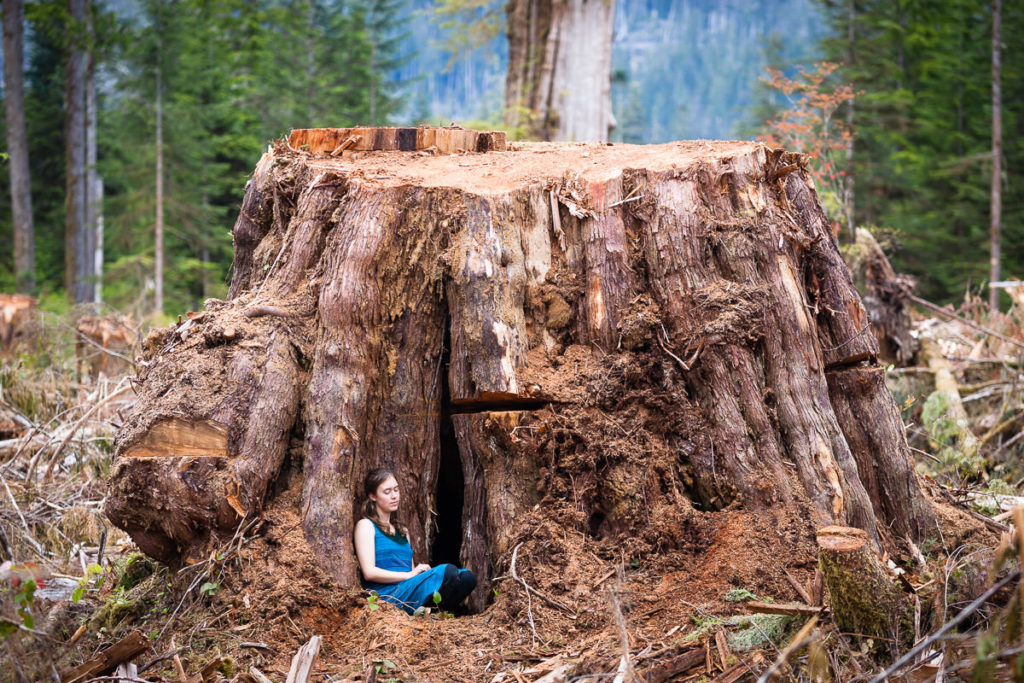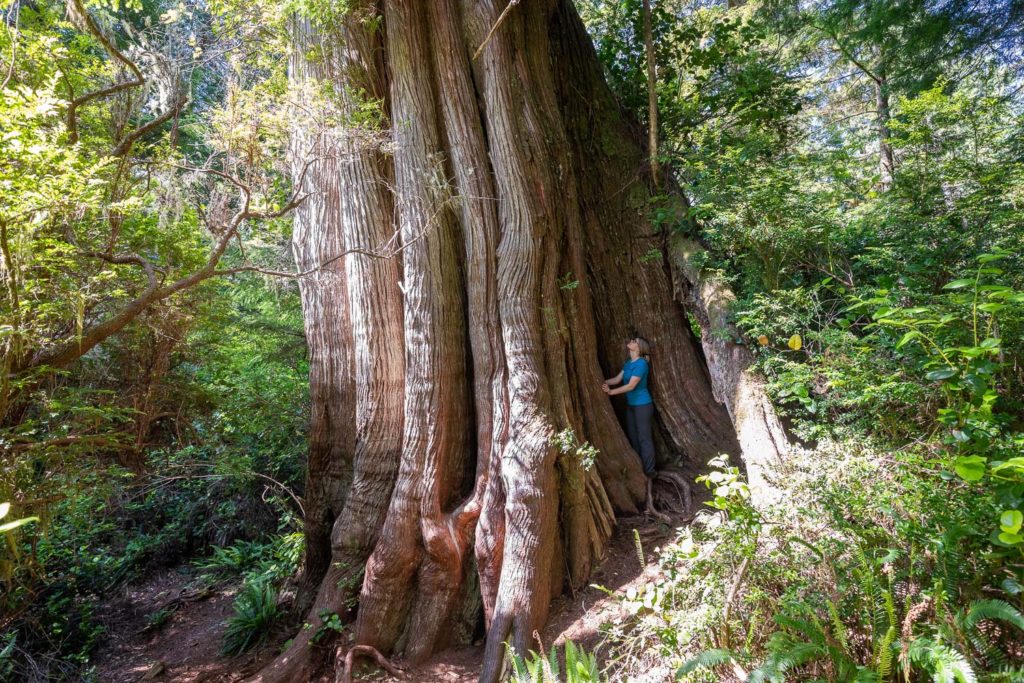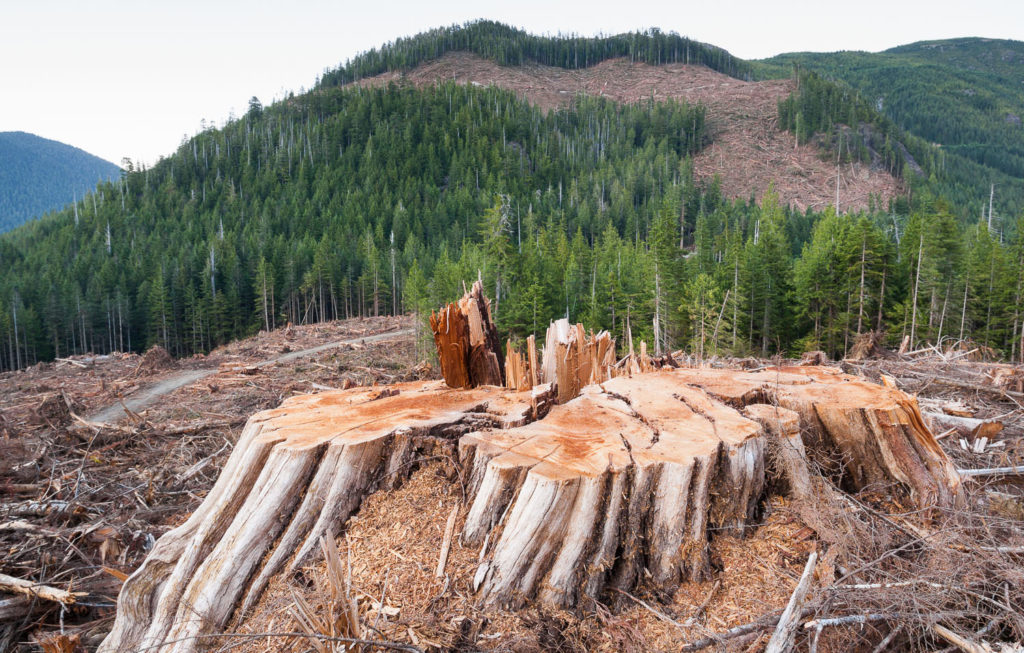Ancient Forest Alliance Interview
We spoke to Andrea Inness from Ancient Forest Alliance, an organisation that advocates for science-based legislation to combat logging to old-growth forests in British Columbia. By listening to the interview with Andrea, you’ll learn more about old growth forests, which host some of the oldest and tallest trees on the planet, the threats they’re facing and what you can do.
Listen here or find us on your favorite podcast app.
October 20, 2020
BC’s Old-Growth Forests: Ancient Ecosystems with Towering Trees



How Should Old Growth Forests Be Managed in British Columbia?
Ancient Forest Alliance, a one-campaign organization in Canada’s British Columbia, advocates for science-based legislation to combat logging to old-growth forests. Andrea Inness, a campaigner from the executive team of Ancient Forest Alliance, recently spoke with Great.com about what is happening to old forest trees in B.C., why they’re endangered and how we can get involved.
Old growth forests are home to some of the oldest and tallest organisms living on the planet and still exist today in British Columbia. Industrial logging is the number one threat to these trees, and continues due to the quality and volume of wood being extracted. Nearly 55,000 hectares of these forests are being logged every year, leaving 3% of British Columbia’s most productive, big tree old growth forests still in existence. Old-growth forests can store 2-3 times more carbon as compared to second-growth forests, limiting the amount of CO2 in the atmosphere and slowing the effects of climate change.
British Columbia has a three-to-one policy in effect -- for every one tree logged, there must be three new trees planted. We should continue to plant new trees but we must first stop cutting down old-growth.
How can we help end oldest growth forest logging?
There are many innovative solutions being used to combat old-growth logging. Replicating second and third growth forests to resemble old-growth forests can help industry transition to second growth logging. Many thousands of tourists from around the world visit every year just to see these forests. If these tourists and local Canadians continue to visit, they can use their combined spending power to demonstrate old-growth forests’ overall benefit to society.
Andrea ensures us that there is still hope. If we continue to visit these forests, to see how beautiful these trees are, we won’t want them to be cut down and the government would listen. Many organizations in British Columbia, alongside Ancient Forest Alliance, are fighting in solidarity for shared goals and want to see these trees live a long, healthy life.
Want to follow Ancient Forest Alliance? Sign up for their newsletter and help them write letters to decision makers - one of their many ongoing campaigns. Or follow them on Facebook and Twitter to stay up-to-date on their current work.
Great.com is an innovative charity project working to move money from the online casino industry towards initiatives focused on preventing climate change. So far, Great.com has generated donations of over $1.3 million. This is done by competing with casinos in Google search rankings for online gaming signups coming from search terms such as "Best online casino New Jersey" and "online casino codes and bonus". The profits this generates are then donated to causes working to stop global warming, rather than being reinvested into the casino industry.
[00:00:00]
Every day you and I get bombarded with negative news. And just like our bodies, become what we eat, our minds become the information that we consume. If you want to stay positive, it’s so important that you also listen to stories that inspire you and uplift you. In this podcast we interview leading experts dedicated to solving the world’s most pressing problems. And if you stick around, I promise you will not only be as informed as if you watched the news, you will be uplifted, inspired, and have more positive energy in your life. Welcome to Great.com Talks With.
[00:00:44]
Welcome today, Great.com Talks With Andrea Inness, who is the campaigner from the executive team of the ancient Forest Alliance dot org, and this is an organization that is protecting old growth forest in British Columbia, in Canada. So I am very excited to talk with her and see what kind of challenges they are facing in protecting and nourishing the forests. Andrea, how are you doing today?
[00:01:14]
I’m well, Michael, thank you so much for having me.
[00:01:18]
All right. Let’s get into it. So how would you start off with how you would describe your organization to someone that might not be so familiar with organization and the challenges that are facing the old forests?
[00:01:30]
Sure. My organization, the Ancient Forest Alliance, we’ve been around for about 10 years, so we’re still fairly new on the scene. But we have one campaign organization, so we are solely focused on ensuring science based protection of endangered old growth forests here across British Columbia. All growth forests are remarkable. Here
in B.C. they are some of the largest, tallest organisms that you can find on the planet, and yet they’re highly endangered. We still log our old growth forests here in British Columbia. About fifty five thousand hectares of old growth is logged every single year in B.C. and they’re facing a new ecological crisis. We’re at the point where if the status quo continues, we will lose these beautiful and unique ecosystems forever, aside from those small areas that are already protected. So my organization works to influence government policy and to create a broad based movement of support across B.C. for old growth forest protection.
[00:02:40]
Wow. I got shivers in the back of my neck when you said that they still log these big trees. There is a huge oak right outside of where I live that has been cut down and it makes me so sad to see it. And so I understand you feel passion to protect these trees, but with so much, I guess, power and financial interest in cutting them down, what can you do to change to policies like how do you even go about doing something like this?
[00:03:10]
Well, one of the tactics that we use is to demonstrate the economic value of old growth forests while they’re still standing in addition to their other values. So, for example, old growth forests in British Columbia are a pillar of our multibillion dollar tourism industry. And thousands and thousands of people come from all over the world to see them every single year from near and far. There’s also been studies that show that keeping old growth forests standing actually provides a greater economic benefit to society than logging them. They’re also critical to our fight against the climate crisis. They store two to three times more carbon than the second growth forest that they’re replaced with. And they have immense value for First Nations cultures, for food, for habitat, for endangered species and freshwater. So we use all of those arguments and demonstrate those values in trying to convince the government that, you know, it’s not it’s not just about their timber value. When they when they look at a forest or
When industry looks at an old growth forest, they see dollar signs, whereas other British Columbians, most British Columbians see these remarkable forests that have so many other important values that overall are an enormous benefit to society.
[00:04:37]
So that’s that’s a big part of the tactic that we said that we use and we use science, of course. So, for example, an independent analysis was just released in June that shows the extent of the crisis that old growth forests are facing in B.C. of one of the biggest tree forests. So those that are in the valley bottoms with the richest soils, the highest biodiversity and the biggest trees. Less than three percent remains today. Yeah, less than three percent of those big tree forests now remain and they’re still being logged. In fact, most of that tiny fraction is slated for logging in coming years. So, you know, you don’t need to look very much further than the government’s own data and these types of scientific analysis to know that it needs to stop. You know, the government needs to draw a line in the sand and say enough is enough. You know, we need to transition the industry to log second growth. We need to protect what is what remains of our endangered growth for us.
[00:05:48]
Yeah, that’s really sad. Three percent left.
[00:05:53]
And I can imagine I can’t even guess how many hundreds or thousands of years it takes for a force like this to regrow. And, yeah, I wish politicians could see more long term than just immediate profits. So I’m grateful that an organization like you have been around for 10 years at least, trying to make some kind of difference.
[00:06:15]
So.
[00:06:19]
If you look forward, then what would you like to accomplish? I would be a great outcome for your organization and let’s say the next 10 years.
[00:06:29]
The first and most important thing that we need is science based legislation in British Columbia, so that involves it’s a bit technical and involves a scientific panel to determine how endangered each forest ecosystem type is and then set a science based target to protect it. So, for example, 15 percent, 20 percent, 30 percent in many cases, that’s a tremendous goal to try and reach because there’s so little remaining of some of these ecosystems and then just to create a timeline to reach that target. So for this certain forest ecosystem to ensure its ecological integrity over the long term, we need to protect, let’s say, twenty five percent of it. And the timeline for doing that is five years. So that that needs to happen across British Columbia for every forest type and then funding needs to follow as well. So funding is a really critical component to the protection of old growth forests, not only to allow for to help communities and forest industry workers transition to a second group, a value added, sustainable second growth industry, but also to support our indigenous communities as well. So to support their land use planning processes, sustainable economic development for indigenous communities as well as indigenous protected and conserved areas that protect old growth forests. So those are two really important components of legislation and funding as well. So we do have some hope. In British Columbia, though, in the past year, the government has sought feedback from British Columbians on how old growth forests should be managed. It was through an independent panel and they reported to the government in the spring. Their report and recommendations have just been released just a couple of weeks ago, and we’re pleased to see that they’re very strong. There’s 14 strong, comprehensive recommendations on how B.C. should best manage old growth forests. And so now we have something to hold the B.C. government accountable to. They need to accept those recommendations and implement them.
[00:08:58]
Hmmm, that brings some sense of relief and hope, like you mentioned. And when the people want something like that to happen, then it could be in the politicians best interest as well.
[00:09:09]
So is the logging the main threat to the forest, would you say? Or are there also threats from maybe climate change or pollution?
[00:09:20]
Logging is the number one threat to our old growth forests, ecosystems in B.C. there is still development or perhaps some pollution, even some energy projects that might threaten old growth. These compared to logging or they don’t really compare to industrial logging. Climate change, though, will impact our old growth forests. For example, we’ve seen in the last couple of years ancient red cedars are struggling with hotter, drier summers. So we’ve had some red cedar die off, sadly. And and going forward, we can expect to see more frequent and more severe storms on the coast of British Columbia, which will also increase blowdown in old growth forests,
knocking down trees and changing precipitation as well. So climate change is a threat to almost any ecosystem on the planet, really. And the old growth forests here in B.C. are no exception. But but industrial logging, the clear cutting of endangered old growth forests is by and large the greatest threat.
[00:10:41]
So when I imagine Canada, as someone that has only been to a brief stint in Toronto, I imagine there’s infinite amounts of forest and now you tell me that only three percent of this oldest and most popular among tourists forest remains. Why aren’t you logging other forests that aren’t as old and as precious?
[00:11:04]
Great question. Certainly there are a lot of forests in British Columbia, if you came here, you would be astounded at how much forest we have. The vast majority of it, about 80 percent, is second or third or fourth growth forest. So it’s already been logged. I go from 80 percent of the forest, 80 percent of the land base of the forested land base that is lockable has already been converted to second growth. So, I mean, it’s very common, especially around
the Lower Mainland, to go hiking, for example, in forests. But see many, many giant stumps. They are a very common feature of the forests in protected areas around the Lower Mainland where I live. But the reason why industry is still targeting these precious old growth forests is because of their monetary value. So if you imagine an old growth tree is enormous, has an enormous volume of wood in it, and it’s very high quality wood as well. So the Greens are very tight. It’s very durable. It’s very aesthetically very nice. So they’re sought after by industry compared to the second growth forests where you don’t get the same volume of wood out of the forest for the effort that you put into it. And it’s just a different type of wood. That said, there’s all kinds of innovative solutions that are being pursued right now to treat second growth wood so that it replicates the durability and the quality and and the aesthetic of old growth. So we have solutions at our fingertips, both here in D.C. and around the world. These solutions are being pursued. We need a government that’s going to support these these innovative solutions so that we can transition to a second growth logging.
[00:13:13]
You have caught my interest now in how forest and logging works, because my uncle owns Forest and he cuts it down then in plants, new trees. So I never thought of how that is affecting the ecosystem? Could you say that the ones that grow up are a good enough replacement or is it just never going to be the same again?
[00:13:35]
It’s really never going to be the same again.
[00:13:39]
Replacing forests with young trees is good. Every forest that’s logged in British Columbia, you have to, you have to plant three trees to everyone that you cut down. Industry will say that they’re doing a great job. It’s very sustainable because they keep replanting the forests. But if you imagine an old growth forest, it’s taken hundreds or thousands of years to become that unique ecosystem. And when it’s cut down and replaced with a younger forest that is then re-logged every 40, 60 years on the coast, it never gets the opportunity to become old again. Even if that second growth forest is set aside in a park, for example, it’ll still take two to three hundred years for that forest to start to replicate the structure and the characteristics of an old growth forest. So we have lots of second growth forest in British Columbia that we can continue logging, albeit it needs to be at a slower pace, a more sustainable rate. But, you know, we should leave the old growth alone at this point and just focus on on that second growth.
[00:14:58]
I understand what you’re saying. The Reground forest has no personality. It just looks like it just replicates the Rolfes of where the farmer put the new little trees. So let’s say someone listens and they say, OK, three percent of the forest remains standing. We need to do something to protect it. And they somehow want to get involved in your calls and do something. What can they do? What can someone from Sweden do if they’re listening?
[00:15:26]
Well, I think I mean, as I mentioned before, old growth forests here have immense tourism value. And, you know, even if you’ve never visited British Columbia for someone in Sweden, it’s probably nice to know that they exist and you want them to be protected, just like I’ve never been to Borneo, but I want the rainforest there to be protected. I think using your power as a potential tourist, someone who would be interested in coming and spending money in the province, that gives you a little bit of leverage. And so you can say, I, I, you know, I would be more inclined to come and visit British Columbia if I knew that old growth forests were protected, were being sustainably managed, that, you know, and your government was more responsible in their management. So if you’re thinking about coming to B.C. or even if you’re not, you can say I you know, I think from from an outsider’s perspective, you can sort of wield your your spending power as a little bit of leverage to say, you know, you’re if you want your forest to continue to draw hundreds of thousands of tourists, you need to protect them. You need to act. And you can also tell the story of the situation in your own country. You know, as we all know, many of the countries in Europe have logged almost all of their original forests over the course of
hundreds of years. British Columbia is on the path to do the exact same thing. So we should be looking around the world and learning from each other. And so having those stories that first hand experience communicated to our decision makers I think is also valuable.
[00:17:20]
I yeah, I would love for us to learn more from each other, and I would also love to go to Canada one day. I’ve seen big trees one time in California and there was a wow experience. It was, yeah, I’ve never seen nature that way, so I would love to come up with it one day. What can someone do to be involved and stay updated with the progress of your organization?
[00:17:46]
Yeah, well you can visit us online. Ancient Forest Alliance dot org. You can sign up to our newsletter, then you can stay up to date on where we’re at with the campaign and any new developments you can send a message to to decision makers on our website. You can write your own personalized letter. You can. Yeah, you can look at other other organizations also doing great work in this space. The Wilderness Committee and Sierra Club, B.C. Canopy Canopy, Doug Canopy Planet, who work on greening up supply chains. Yeah, lots of different groups doing some great work in this space that you can certainly support, follow, donate to and much, much appreciated for sustainability.
[00:18:42]
Andrea, thank you so much for taking the time to talk with great dotcom today. We appreciate your time and everything you’ve been teaching us about all.
[00:18:54]
My pleasure, Neal, thanks so much for having me.
[00:18:57]
Thank you. And if you listen to this and you enjoyed these dialogues, I would like for more people to hear about stories like Old Growth Forest, what you can do to help us out. This to go to your podcast app and plus the subscribe button that would greatly help our chances to climb in different top lists.
[00:19:15]
Some more people can hear these interviews. Thank you so much for listening and we’ll see you in the next episode.
END OF TRANSCRIPT



